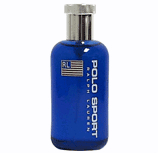If you are like me, you vividly remember the first time cologne marketing targeted you. My first one was Tommy by Tommy Hilfiger (blue grass, spearmint, apple, lavender, amber, citrus, cranberry, and cinnamon). That was followed soon after by Polo Sport (seaweed, algae, mint and is accented with nutmeg, oakmoss and sandalwood)

and Coolwater (top notes of seawater, mint, green notes, lavender, coriander, and rosemary; middle notes of sandalwood, jasmine, neroli, and geranium; and base notes of musk, oakmoss, cedar, tobacco, and amber)

As I got older and my elitaste got more refined, I started seeking scents that were more in line with my elitaste. I’ve never been a huge cologne guy as I believe one strategic spray is enough. In college, I saw friends drench themselves in Jean Paul Gaultier and then wonder at the end of the night why they weren’t getting any. This post is to share some knowledge about colognes, how they can be used effectively and then send you on your way to finding your own scent.
First things first: in perfumery there are Accords which is equivalent to a chord in music. An accord in perfumery describes a balanced complex of 3 or 4 fragrance notes which loose their individual identity to create a completely new, unified odor impression. Each component material is in balance and harmony with each other so that no single component can be detected. The top note is strongest when a fragrance is first applied, the middle note develops next and will last for a few hours and the base note lasts all day
Perfumes are separated into a number of categories:
Perfume (Extract): Most highly concentrated form of fragrance, containing a high percentage of perfume compounds (about 20-50%), the strongest and the longest lasting.
Eau de Parfum: An alcoholic perfume solution containing a relatively high percentage of perfume compound (about 10-15%).
Eau de Toilette: An alcohol/water based perfume solution containing a moderate percentage perfume compound (about 3-8%).
Cologne (Women’s): A light form of specific fragrance with a relatively low concentration of perfume compound (about 3%) in an alcohol water base. The term is derived from Eau de Cologne, one of the original fragrance compositions.
Compound: Term used in the industry for the concentrated perfume or flavor mixture before it is diluted or used in products.
Cologne (Men’s): More concentrated than the women’s cologne (about 5-8%). It is similar to the strength of a women’s Eau de Toilette. A men’s After Shave by comparison will be somewhat lighter (about 3-5%).
A very important component that YOU bring to the table in the fragrance world are pheromones. Pheromones are chemicals produced by living organisms and are used to transmit messages to other member of the same species. Nature has provided them so that we can communicate rapidly and efficiently by means of scents. The secret to pheromones lay in their discreet strength and the way they affect our personal environment.
The Perfume Family is made up of a number of different members:
Chypre: The basic chypre accord consists of a combination of fresh notes (ex: citrus) and a mossy-
woody complex. The inspiration of 20th century chypre-type perfumes is ‘Chypre de Coty’, created by
Francois Coty, launched in 1917.
Citrus: Fragrance accords are reminiscent of fresh impressions coming from citrus peels, ex: Lemon,
Bergamot, Orange, Grapefruit, Tangerine, Lime.
Floral: Fragrance accords are reminiscent of flowers, such as the “first ladies of flowers”: Jasmine, Rose,
Tuberose and Ylang-Ylang.
Floriental: It is a lighter variant of the typically heavy Oriental type of perfume, in which floral notes are
accentuated.
Fougère: It is a French word meaning ‘fern’. Fragrance accords result from a harmonious blend of fern-
like notes blended with herbal notes such as Lavender. It was coined after Houbigant’s ‘Fougère Royale’
a century ago. One of the first modern fougère perfumes to become highly popular was the masculine
fragrance ‘Brut’, launched by Fabergé in 1964.
Fruity: It refers to sweet or sour edible fruit odors (excluding citrus), ex: apple, berries or melons.
Oriental: Fragrance accords create corresponding associations by the interplay of balsamic, sweet and
ambery aspects, ex: wood, benzoin, tolu, amber, and vanilla, often contrasted with fresh, citrus aspects.
These fragrances tend to be more heavy and intense.
Woody: It refers to the aroma of freshly cut, dry woods such as Cedarwood, Patchouli, Vetiver or
Sandalwood.
Here are some tips when finding a cologne that is right for you (or a perfume that is right for your girl):
• Coffee will help to clear the nostrils between scents.
• Place your fragrance on pulse points, inside wrists, back of knees, and behind your ears.
• When you spray perfume into your hair, every time you turn your head you will release fragrance.
• Very important: When applying perfume you should never rub. Rubbing crushes the molecules of fragrance and ruin the scent
• You should test the perfume on yourself, not your friend. Perfumes will smell different on different people because of pheromones.
• Storage perfume at room temperature and not directly in sunlight.
• When choosing a perfume for someone else, chose the lighter floral fragrances, they are acceptable for everyone. Heavier perfumes with oriental notes are more risky.
March 15, 2009 7:21 am mrmartinezbodega Website